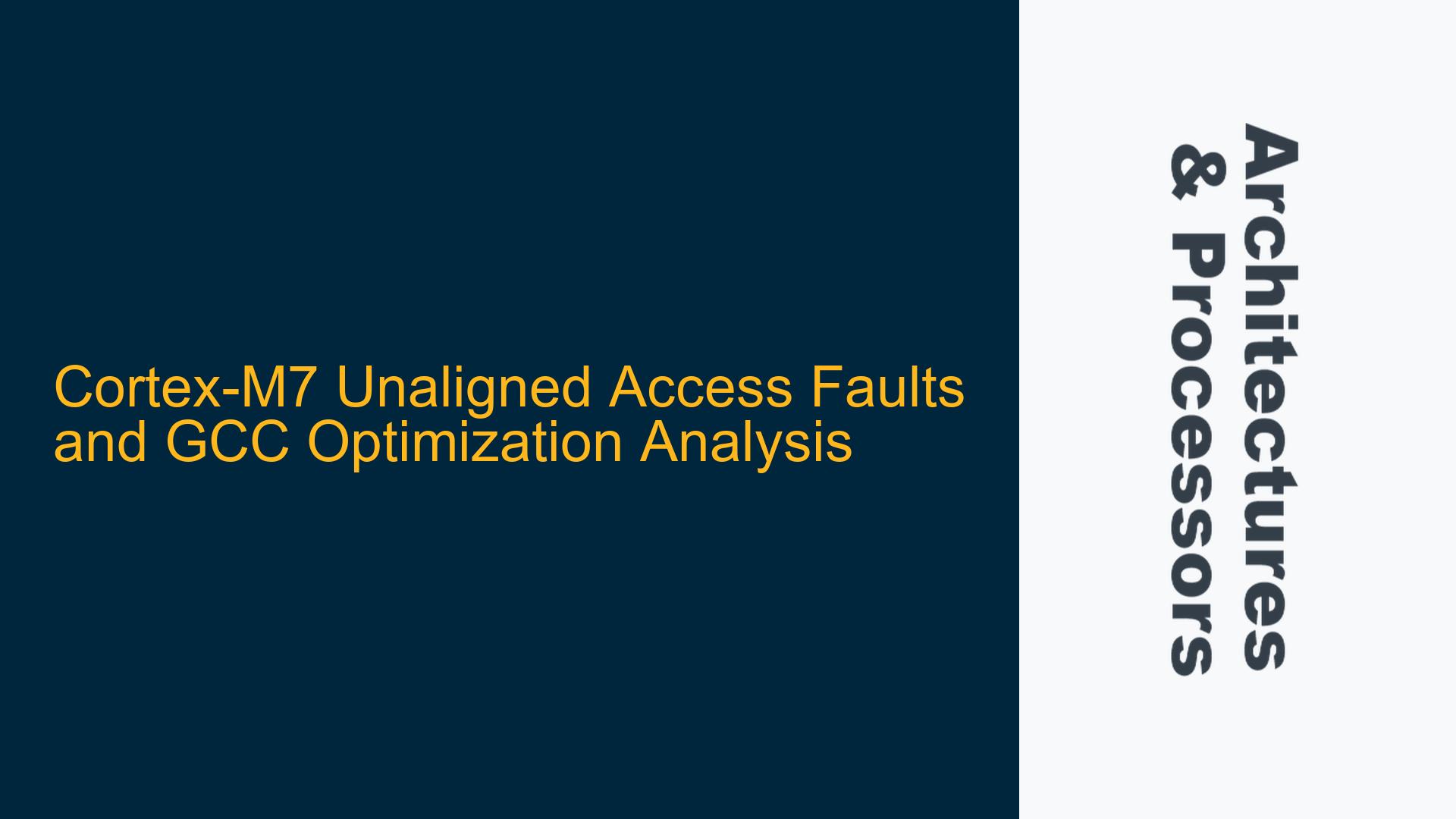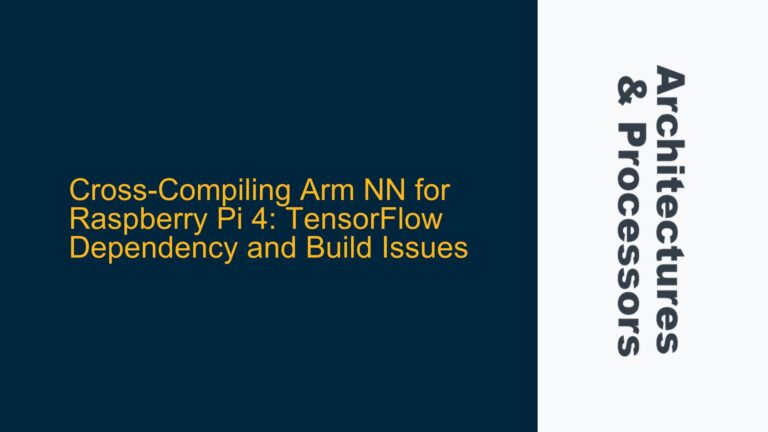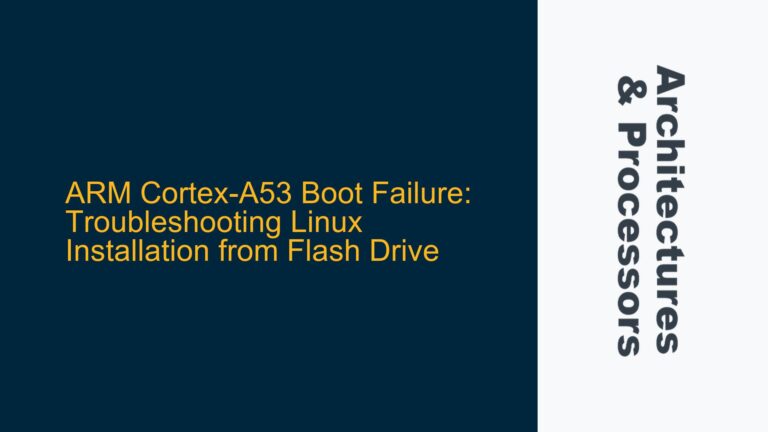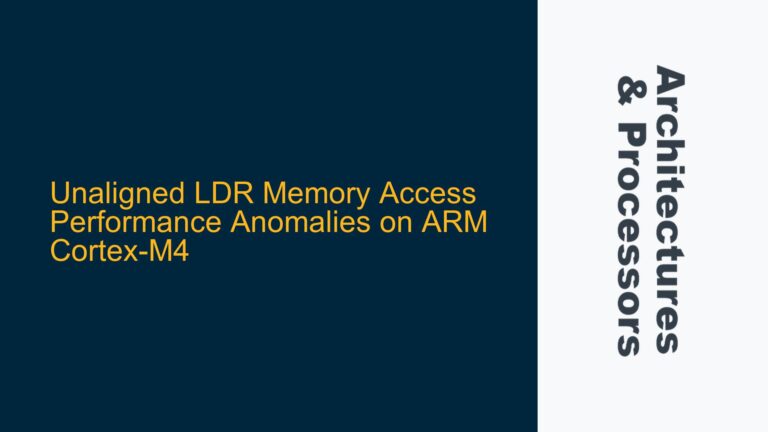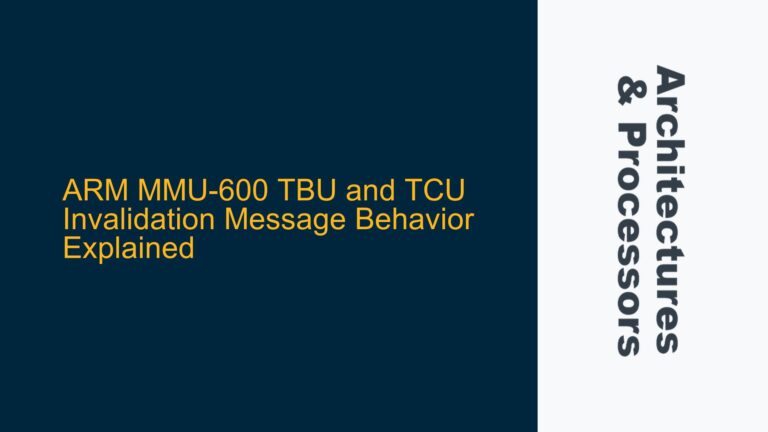Cortex-M7 Unaligned Access Faults During LDM/STM/LDRD/STRD Operations
The Cortex-M7 processor, based on the Armv7-M architecture, is a high-performance microcontroller core designed for embedded systems requiring significant computational power. One of its key features is the Memory Protection Unit (MPU) and the Tightly Coupled Memory (TCM) architecture, which enables low-latency access to critical data. However, the Cortex-M7 has strict alignment requirements for certain memory operations, particularly for LDM (Load Multiple), STM (Store Multiple), LDRD (Load Doubleword), and STRD (Store Doubleword) instructions. These instructions are commonly used in embedded firmware to optimize memory access patterns and improve performance.
When an unaligned access occurs during the execution of these instructions, the Cortex-M7 will trigger an UNALIGNED fault, regardless of the configuration of the Configuration and Control Register (CCR) or the UNALIGN_TRP bit. This behavior is by design, as the Cortex-M7 architecture does not support unaligned accesses for these specific instructions. The fault is typically indicated by the HardFault or UsageFault exception handlers, and the faulting address can be found in the BusFault Address Register (BFAR) or the MemManage Fault Address Register (MMFAR).
The issue described in the discussion arises when the firmware, compiled with GCC and the -O2 optimization flag, intermittently triggers UNALIGNED faults. The problem appears to be dependent on the number of source files included in the build, suggesting that the alignment requirements are not consistently enforced across the codebase. This inconsistency can lead to subtle bugs that are difficult to reproduce and diagnose, especially in complex systems with multiple memory access patterns.
GCC Optimization and Misaligned Pointer Usage
The root cause of the UNALIGNED fault in this scenario is likely related to misaligned pointer usage in the firmware code. GCC, when optimizing with the -O2 flag, may generate LDM, STM, LDRD, or STRD instructions to improve performance. However, if the pointers used in these instructions are not properly aligned, the Cortex-M7 will fault. This issue is exacerbated by the fact that the alignment requirements for these instructions are not always explicitly enforced by the compiler, especially when dealing with complex data structures or dynamic memory allocation.
One common source of misaligned pointers is the use of packed structures or unions, where the compiler may not enforce natural alignment for performance reasons. For example, consider the following code snippet:
struct __attribute__((packed)) SensorData {
uint8_t id;
uint32_t value;
};
void processSensorData(struct SensorData *data) {
uint32_t value = data->value; // Potential unaligned access
}
In this case, the value field in the SensorData structure may not be aligned to a 4-byte boundary due to the packed attribute. When the processSensorData function accesses the value field, the Cortex-M7 may generate an LDR instruction that triggers an UNALIGNED fault if the data pointer is not properly aligned.
Another potential cause is the use of dynamic memory allocation, where the alignment of the allocated memory is not guaranteed. For example, if the firmware allocates a buffer using malloc and then casts it to a structure pointer, the resulting pointer may not be aligned to the required boundary for LDM/STM/LDRD/STRD instructions.
Debugging and Resolving Unaligned Access Faults
To diagnose and resolve UNALIGNED faults on the Cortex-M7, follow these steps:
-
Identify the Faulting Instruction and Address: When an UNALIGNED fault occurs, the Cortex-M7 will store the faulting address in the BFAR or MMFAR registers. Use the exception handler to log these registers and determine the exact location of the fault. The faulting instruction can be identified by disassembling the firmware binary or using a debugger to inspect the program counter (PC) at the time of the fault.
-
Check Pointer Alignment: Once the faulting instruction and address are identified, inspect the code to determine if the pointer used in the instruction is properly aligned. For example, if the fault occurs during an LDRD instruction, verify that the pointer is aligned to an 8-byte boundary. Use the
__alignof__operator in GCC to check the alignment of data structures and pointers. -
Enforce Alignment in Data Structures: If the fault is caused by misaligned data structures, modify the code to enforce proper alignment. For example, use the
alignedattribute to ensure that critical fields are aligned to the required boundary:
struct SensorData {
uint8_t id;
uint32_t value __attribute__((aligned(4)));
};
-
Use GCC Alignment-Specific Options: GCC provides several options to control alignment behavior. For example, the
-fno-strict-aliasingoption can prevent the compiler from making assumptions about pointer alignment, while the-Wcast-alignoption can generate warnings for potentially misaligned pointer casts. Additionally, consider using the-mno-unaligned-accessoption to disable unaligned memory accesses entirely, ensuring that all memory operations adhere to the Cortex-M7 alignment requirements. -
Implement Runtime Alignment Checks: In cases where dynamic memory allocation or external data sources are involved, implement runtime checks to ensure that pointers are properly aligned before using them in LDM/STM/LDRD/STRD instructions. For example:
void processSensorData(struct SensorData *data) {
if ((uintptr_t)data & 0x3) {
// Handle misaligned pointer
} else {
uint32_t value = data->value; // Safe access
}
}
- Optimize Memory Access Patterns: If the fault is caused by performance-critical code that relies on LDM/STM/LDRD/STRD instructions, consider optimizing the memory access patterns to ensure proper alignment. For example, use aligned buffers or rearrange data structures to minimize the need for unaligned accesses.
By following these steps, you can systematically diagnose and resolve UNALIGNED faults on the Cortex-M7, ensuring that your firmware adheres to the alignment requirements of the architecture while maintaining optimal performance.
